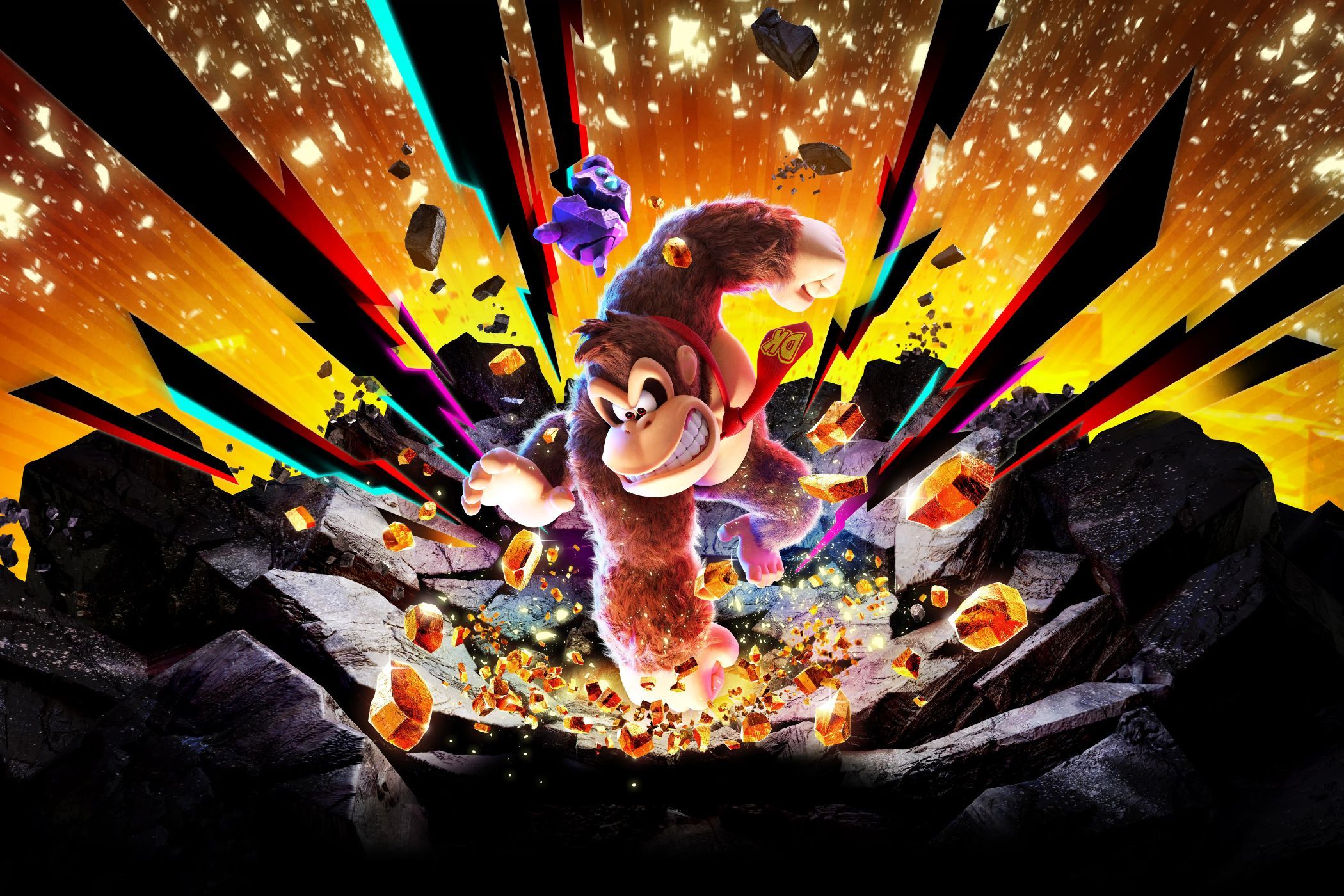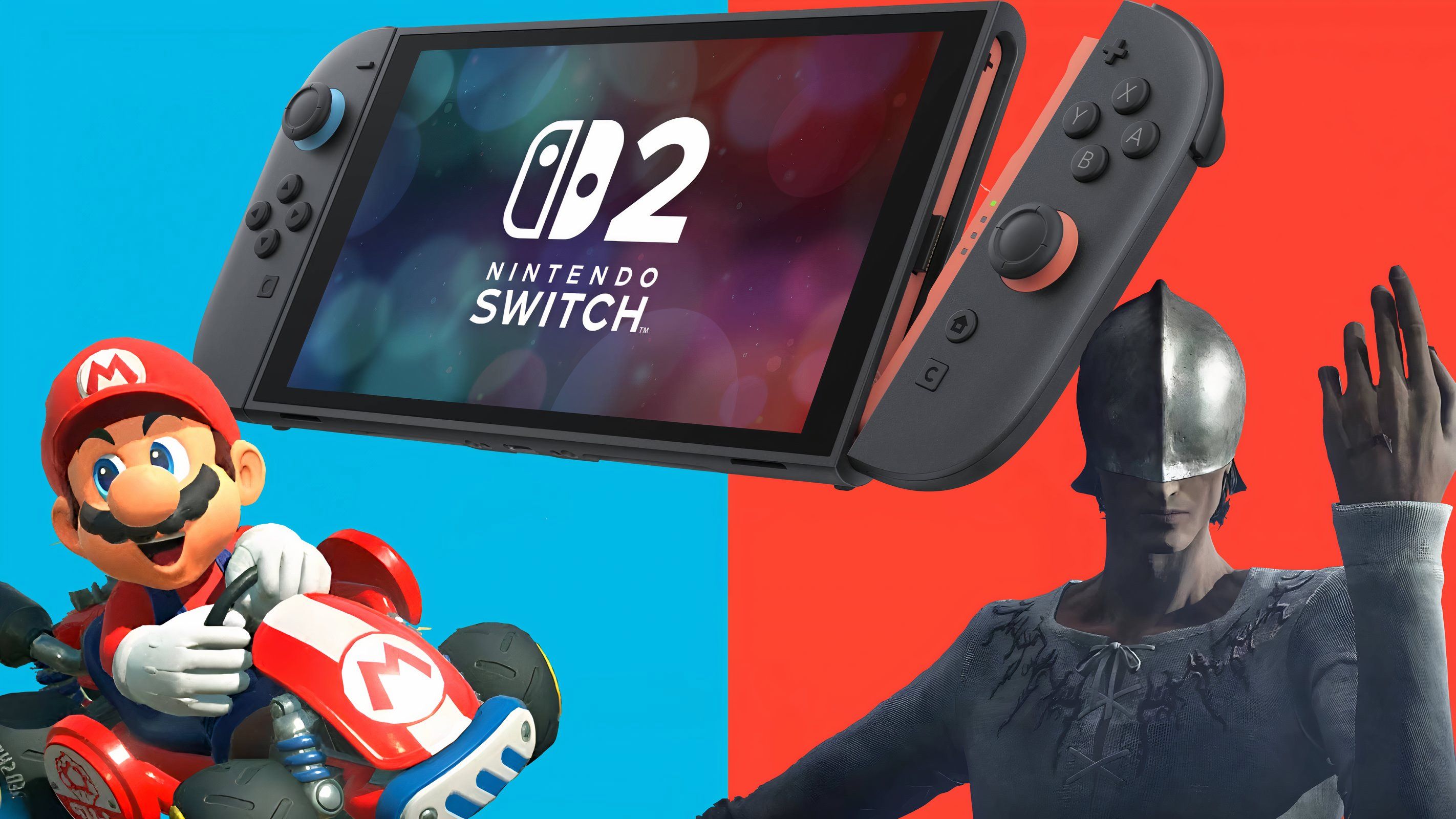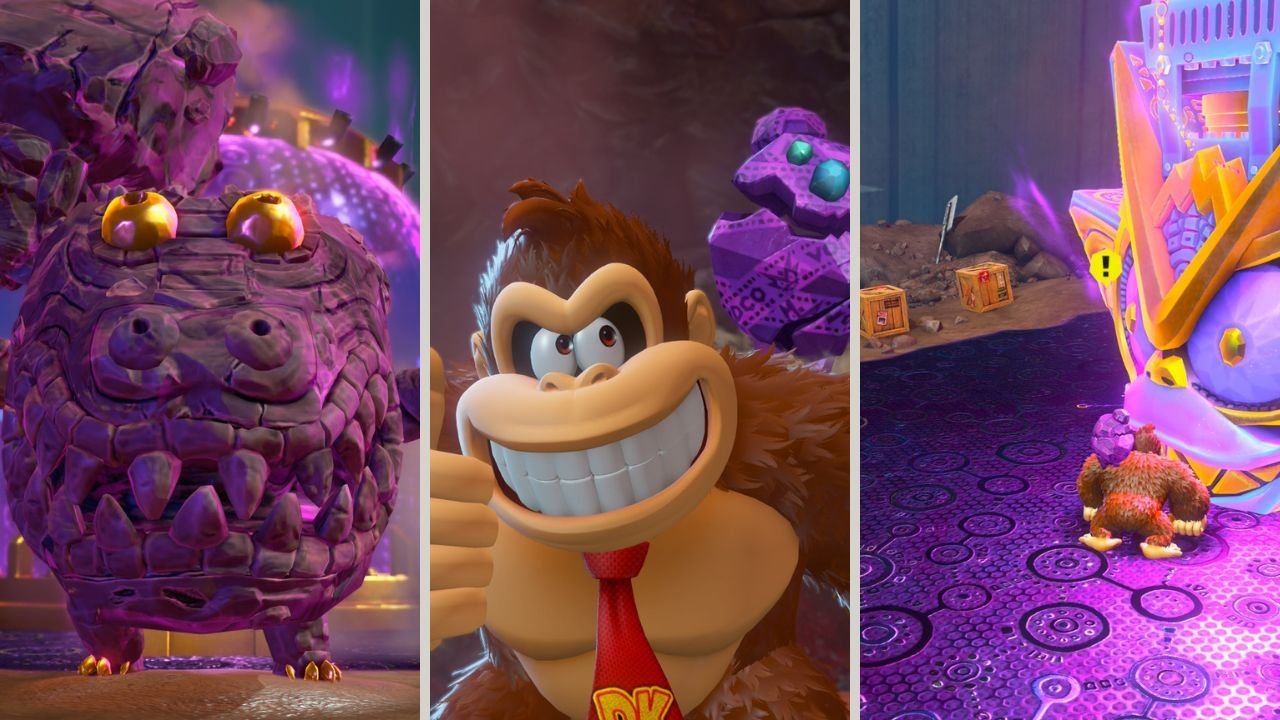Donkey Kong Bananza has come out the gate swinging, solidifying itself as not only one of Nintendo’s best, but a game that makes owning a Nintendo Switch 2 a no-brainer. While there are plenty of Switch 2 games on the horizon, Donkey Kong Bananza feels like the big hitter for the year, and it’s not just because it’s an incredible Nintendo 3D platformer. What makes Donkey Kong Bananza special is its weirdness, showing off a style of Nintendo game that feels pulled straight out of the GameCube era. Here’s what makes Donkey Kong Bananza feel like a GameCube era Nintendo game.
It’s got a strange energy, like Luigi’s Mansion and Pikmin
Creativity isn’t unusual for Nintendo, but some of the more silly aspects feel beyond Nintendo’s usual output
Nintendo thrives working with silly and strange worlds, but Donkey Kong Bananza has an energy that feels similar to a few series that started on the Nintendo GameCube. Pikmin and Luigi’s Mansion both come to mind, games that trade in Mario and Nintendo nostalgia, but take new ideas as far as they can. Some of the more silly aspects feel right at home though. The Bananza sequences, where you unlock new forms for Donkey Kong, where Pauline sings a new song all feel particularly ridiculous in the best ways possible. Silly voice lines like the “Oh banana” that happens every time you collect a banana just add to an energy that makes Donkey Kong Bananza sing in a way that’s unexpected. Despite Donkey Kong being a character tied intrinsically to Mario, the world here is entirely its own, which makes it feel special.

Related
Donkey Kong Bananza’s stunning voxel-based gameplay comes at a performance cost.
Donkey Kong Bananza sacrifices polish for creativity
There are a few rough edges here, but there’s no way to get around it
There are two key areas where Donkey Kong Bananza is missing that Nintendo level of polish, which are the camera and frame rate. While it’s not a great sign that a first-party game is having performance issues just one month after the launch of Nintendo Switch 2, the times they occur make it easier to forgive. It happens during cutscenes where you aren’t playing, and it’s typically a short burst of choppiness. The other times are during some particularly hectic destruction, but in the 10 hours I’ve played so far, this has only happened about three times, and it was quick. The camera isn’t particularly great in tight spaces, which comes up frequently depending on how much digging you like to do. But these issues stem from the decision to not compromise on the main vision, which is total freedom to destroy levels however you see fit, which is what makes Donkey Kong Bananza special.
One big idea, taken as far as it can go
While Mario Odyssey was home to every idea, Donkey Kong Bananza has one solid idea
Donkey Kong Bananza reminds me of Super Mario Sunshine, my favorite 3D Mario game. While the rest of the series often used its setting to host a bunch of smaller ideas, like the different areas in Super Mario Odyssey or Super Mario Galaxy, Super Mario Sunshine worked within a simple set of rules. The game must take place on an island resort, so what would be the levels in an island resort? This central theme that the design operates around creates interesting ideas, which is why I love Super Mario Sunshine. Donkey Kong Bananza might operate with complete freedom in the themes of each level, swinging wildly from layer to layer, but the creative restrictions come from the gameplay. Ultimately, the solution in each level must be related to destroying the environment, since that is the main form of gameplay. Using that single idea to come up with areas and new powers has this creative focus that results in fun ideas all based on a central core idea, which excites me to see what they can come up with.
It isn’t as experimental as some GameCube games
Donkey Kong Bananza does play a lot of the expected Donkey Kong notes
Donkey Kong Bananza does differ from the GameCube era games in the way it uses all the Donkey Kong games that came before. Luigi’s Mansion doesn’t contain 2D platforming sections because that’s where Luigi came from, and Super Mario Sunshine doesn’t have a Super Mario 64 level in it. Donkey Kong Bananza incorporates elements from older games, like small challenge levels that operate in 2D, like Donkey Kong Country, capitalizing on the games that came before. There are a few other ways it uses the previous games later that I won’t spoil, but it doesn’t shy away from what came before. This isn’t a negative by any means, Donkey Kong Bananza uses those moments well, but it’s not something that older Nintendo games would always use to their advantage.
Donkey Kong Bananza feels like a reinvention of the character
The GameCube era was defined by Nintendo taking swings, and Donkey Kong Bananza feels like a big swing
What ultimately makes Donkey Kong Bananza feel like a GameCube era Nintendo game is the focus on using previously established characters to make something wholly new. Luigi’s Mansion trades on existing characters, Pikmin uses Nintendo iconography in the items in the environment, and Donkey Kong Bananza uses DK and his love of bananas to make a new style of 3D platformer. Without Donkey Kong’s legacy of smashing barrels and loving bananas, the idea to have nearly full destruction in a 3D platformer. It doesn’t work with Mario, and it might feel like a tougher sell with a brand-new character, despite this version of Donkey Kong feeling new. If this is the type of creative projects Nintendo is cooking up for the Switch 2, we might be in for one of the best console libraries of all-time.

Related
6 games I can’t wait for on the Nintendo Switch 2
From Metroid to Mario Kart, here are 6 Nintendo Switch 2 games I can’t wait to play on day one — and why.
